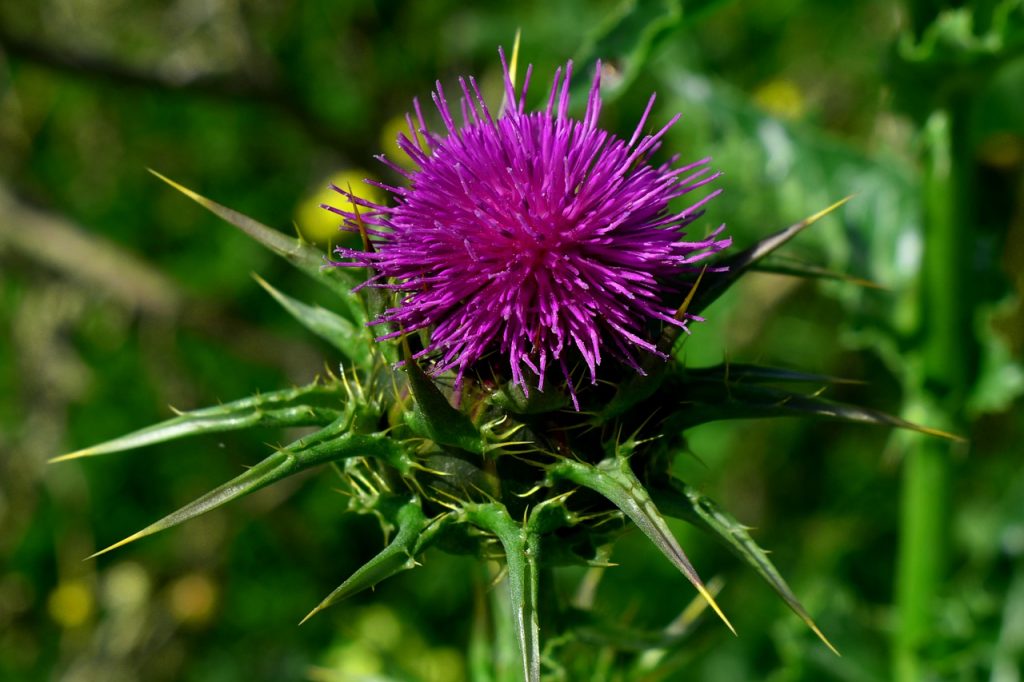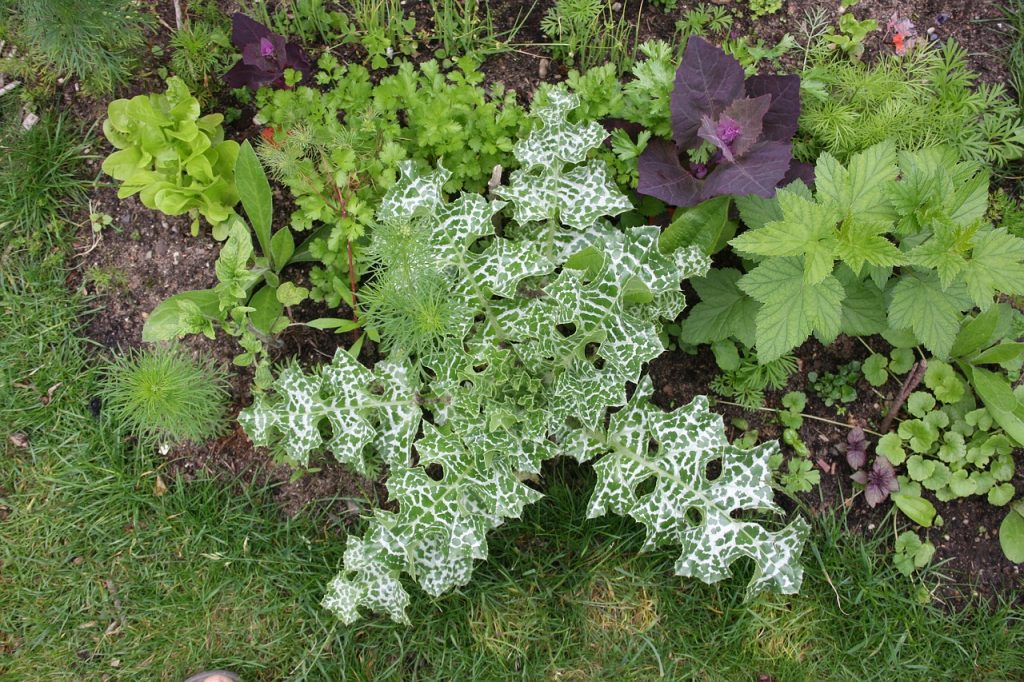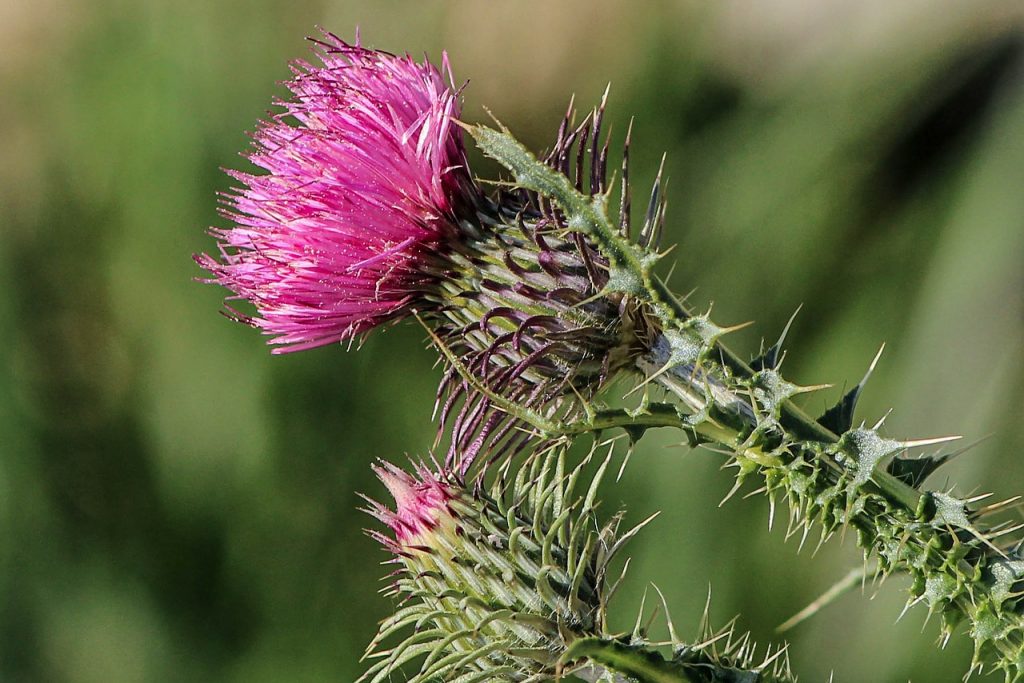By living the modern way of life, our body is exposed to countless amount of chemicals, thus it is not surprising that the popularity of detoxification is rising sharply. However, it is less known that most of the cures bring negligible effectiveness. For example, with sweat, only water-soluble toxins are able to leave, and only in a very little amount. Instead of sonorous but scientifically questionable detoxification treatments, it is much more rewarding to support the health of our main detoxifying organs, the liver and the kidneys.
The kidneys and liver play an almost exclusive role in detoxification. Chemicals entering the body will leave through the urine, or will be degraded by the liver, which excretes them party into the bile to be removed with the feces. Protection of the health of kidneys was already discussed in our earlier posts:
In this post the liver protecting effect and the improvement of detoxification by the silymarin extract of the milk thistle is discussed.
Milk Thistle
Scientifically called Silybum marianum is a prickly plant with typical purple flowers from the Mediterranean region. The Greek word ‘silybum’ means tassel or tuft, referring to the shape of its flowers, typical to it and to its close relatives like other thistles and burdocks. The ‘marianum’ appellation is linked to a legend according to which the veining of the leaves is milky white because the milk of the Virgin Mary dripped and colored it. Thus, its other common names are Marian thistle or blessed milkthistle
The healing power of milk thistle - silymarin
The healing isolate extracted from milk thistle is silymarin, which is found in large quantities mainly in the peel of the fruit. The fruit extract contains 65-80% silymarin and 35-20% fatty acids, including the essential omega-6 linoleic acid, which is essential for the body. Silymarin itself is a multicomponent substance, containing small amount from the flavonoid called taxifolin, and taxifolin-lignan conjugates (so called flavono-lignans) as main constituents, such as silibinin A and B, silicristin and silidianin.
Based on both traditional and modern medicine, silymarin possesses protective and regenerative effects to the liver. According to ancient Roman records, it was used for abdominal complaints, while nowadays it is used as an adjuvant therapy for liver diseases. In some of the countries, it is an over-the-counter medicine with a recommended daily dose between 400 and 600 mg, preferably divided into 2-3 parts. The field of application of silymarin, as it exerts its protective effect directly on liver cells, covers practically all types of liver diseases. Its consumption is most often recommended in the following cases:
- liver disease associated with alcoholism;
- non-alcoholic fatty liver;
- liver damage due to hepatitis virus infection;
- liver failure caused by herpes virus;
- liver tumors;
- toxic fungi consumption survivors (e.g. death cap);
- mitigation of the harmful effects of animal poisons (e.g. snake bites);
- liver damage inducing medicines (e.g. paracetamol).
How can it protect the liver?
Antioxidant. As part of the normal function of the liver, the degradation of toxins produces reactive free radicals as by-products, which can be neutralized by antioxidants present in the liver. In excess amount of toxins (e.g. drinking a lot of alcohol, taking liver damaging medicines) or in the case of metabolic disorders (e.g. insulin resistance) the redox balance can be disrupted, and the overflow of free radicals can induce liver damage. Silymarin is capable to support the restoration of the balance by the neutralization of these free radicals. Moreover, since the active components of silymarin are rather fat soluble, it can inhibit lipid peroxidation – such as vitamin E – and therefore protect liver cells from destruction.
Anti-inflammatory. Increased level of free radicals can lead to cellular damage and accelerated inflammatory cytokine production rate, which can spread throughout the liver. Silymarin can bind to receptors in the cell nucleus and thus regulate cytokine production as a support against overreaction. During diseases with chronic (long-term) liver inflammation, liver cells are prone to die, while no new cells can form due to inflammation, so their place is filled up with connective tissue (fibrosis), which results in the deterioration of the detoxifying capacity. Silymarin decreases the extent of fibrosis, promotes liver regeneration and formation of new hepatic cells.
Regulator of detoxifying enzymes. Decomposition and neutralization of medicines, toxins, etc. are fulfilled in 2 main phases. In phase I, chemicals are converted into inactive metabolites, while in phase II they are conjugated in order to be directed into the bile or into the urine through the kidneys. Unfortunately there are several toxins, that are still toxic after phase I, moreover, the cell-destroying effect may be increased even more. It is therefore of the utmost importance that they pass through phase II as soon as possible and be excreted. Silymarin can enhance the activity of phase II enzymes, thus the harmful metabolites will not accumulate.

Nowadays there are numerous cures promising large-scale detoxification are reachable for those, who would like to do something for their health. The real detoxification, however, is made by our kidneys and liver, thus it is more profitable to support these organs. Silymarin extract from the milk thistle is proved to be protective against liver damage, and after consuming it, liver enzyme levels (such as ALT, AST) above the normal threshold begin to decrease. The water solubility of the active substance concentrated in the kernel is poor, thus it makes no sense to consume it as tea. Instead, it is advisable to use preparations containing standardized extracts
Scinetific summary of the liver protective effect of silymarin is under this link:





